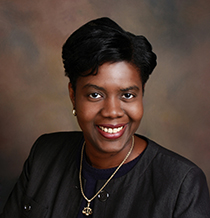On April 8, 2022, the day following Justice Ketanji Brown Jackson’s confirmation as the next justice of the Supreme Court of the United States (“Supreme Court”) she said:
And it is an honor — the honor of a lifetime — for me to have this chance to join the Court, to promote the rule of law at the highest level, and to do my part to carry our shared project of democracy and equal justice under law forward, into the future.
February 25, 2023 marks one year since President Joe Biden nominated Justice Jackson for the highest court in our country.
How Did We Get Here?
On April 7, 2022, Justice Jackson’s nomination was confirmed, with Vice President Kamala Harris presiding over the Senate confirmation vote. The significance of that alone should not be easily brushed aside.
On June 30, 2022, Justice Jackson took her judicial oath as an Associate Justice of the Supreme Court. Justice Jackson then became the first Black woman Supreme Court Justice.
Justice Jackson was born in Washington, D.C. She grew up in Miami, FL and attended Miami Palmetto Senior High School. She attended and graduated from Harvard-Radcliffe College with her Bachelor’s Degree. She then enrolled in Harvard Law School and graduated with her juris doctor in 1996.
Justice Jackson’s career includes varied positions in public service. She served as a Supreme Court clerk, a federal public defender, Vice Chair of the U.S. Sentencing Commission, a judge on the U.S. District Court for the District of Columbia, and a judge on the U.S. Court of Appeals for the D.C. Circuit. She also worked for three years in private practice.
Before Justice Jackson’s historic confirmation in April 2022 and subsequent oath in June 2022, there was Justice Thurgood Marshall, the first Black Supreme Court Justice. He took his judicial oath on October 2, 1967 and served on the Supreme Court until October 1, 1991.
There have been seventeen Supreme Court justices who have taken the judicial oath spanning the timeframe between Justice Marshall’s oath and Justice Jackson’s oath. In the middle of that timeframe came Justice Clarence Thomas, the second Black Supreme Court Justice. He took his judicial oath on October 23, 1991. He was the ninth justice to take the oath after Justice Marshall and also the ninth Justice to take the oath prior to Justice Jackson. Justice Thomas currently sits on the Supreme Court and as such, marks the first time that there are two Black Justices on the Supreme Court simultaneously.
From Attorney Macon Bolling Allen, the first Black attorney, to Justice Jackson, Black people have rightfully demanded and took action to be included in the legal profession. Thank you to Justice Jackson for being a part of the thread of historical moments in the tapestry of Black History. This is forward movement.
I grew up in a small town on the Treasure Coast and was aware of the profession as a lawyer, but I failed to see “myself” in the profession. Even today, after my hometown has experienced a surge in population, the billboards of the local attorneys that line the local roads bear little resemblance to the girl that stared back at me in the mirror years ago and to the woman staring back at me today. Black people make up 13.4 percent of the United States population, but Black attorneys make up 4.5 percent of lawyers in the United States. Black women attorneys, therefore, make up a fraction of that number in our beloved profession.
As we close out yet another yearly celebration of Black History, it’s easy to forget the 28 days where we intentionally reflect on where we have come as a nation. However, we cannot ignore how much further we need to progress in this journey for equality, diversity, and inclusion.
Justice Jackson further stated in her remarks on April 8, 2022:
It has taken 232 years and 115 prior appointments for a Black woman to be selected to serve on the Supreme Court of the United States.
But we’ve made it. We’ve made it, all of us. All of us.
And — and our children are telling me that they see now, more than ever, that, here in America, anything is possible.
So, where do we go from here at the point where the legal profession and Black History intersect?
Where else? Chief Justice of the Supreme Court of the United States.
I only hope that the path there for us actually becomes attainable.
Source Materials:
1. https://www.whitehouse.gov/briefing-room/speeches-remarks/2022/04/08/remarks-by-president-biden-vice-president-harris-and-judge-ketanji-brown-jackson-on-the-senates-historic-bipartisan-confirmation-of-judge-jackson-to-be-an-associate-justice-of-the-supreme-court/
2. https://www.whitehouse.gov/kbj/
3. https://supremecourthistory.org/supreme-court-justices/associate-justice-ketanji-brown-jackson/
4. https://www.supremecourt.gov/about/biographies.aspx#KBJackson
5. https://www.supremecourt.gov/about/members_text.aspx
6. https://freedomcenter.org/voice/press_release/freedom-center-tells-story-of-nations-first-african-american-lawyer/
7. https://www.abalegalprofile.com/demographics.php#anchor4


